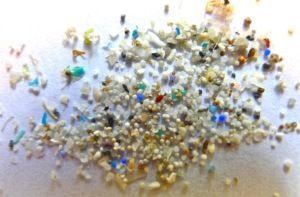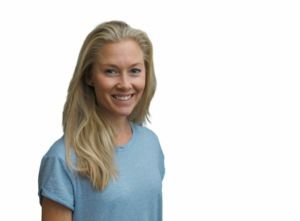Opinion
A Dane Abroad: If you wear makeup you are most likely eating plastic
Kirsten Louise Pedersen
This article is more than 4 years old.

“Strangest vomit I’ve ever seen” (photo: Flickr/Oregon State University)
In the August 21 issue of Politiken, Jonas Pröschold discussed the findings of a 2018 international report that stated that microplastics were found in the digestive systems of 100 percent of participants (humans) from eight different countries.
Pröschold further cited a 2020 research project from SDU that concludes there is no way to avoid eating plastic, as it is now found in just about every single substance that we humans ingest, such as salt, air and water.
Beat the beads
Despite not being surprised at all, my heart sank.
We have cringed at seeing the stomachs of marine life around the world containing absurd amounts of plastic items, and somehow we humans have counted ourselves superior and fortunate in that we (mostly) have the cognition to refrain from eating plastic bags or getting plastic straws stuck in our noses. But alas, common sense is no longer sufficient, as there are plenty of other obscure ways that we can unknowingly gobble up plastic.
Pröschold particularly highlights the bizarre amount of microplastics in skin care, make-up and personal care products like toothpaste. He discovered this after using the app ‘Beat The Micro Bead’, which allows you to scan the ingredient list of any product, which then identifies the types of microplastics it contains.
I want to use it not eat it
After downloading the app myself, I have been somewhat obsessed with scanning products in my cupboard, as well as in shops, to see which contain microplastics. After many an appalled public gasp, this turned out to be the majority.
No labelling exists that warns of the presence of microplastics, so while your product may be labelled ‘natural’, ‘organic’, ‘vegan’, ‘ethical’, ‘non toxic’ or whatever, it most often still contains microplastics. The biggest offenders identified thus far are nail polish, make-up, hair care products and sunscreen.
I don’t know about you, but I find it disturbing that a product that I might eat or breathe in contains any plastic whatsoever. Anything that goes over your lips – like moisturiser, foundation and lip gloss – obviously comes with the risk of you ingesting some of it. The same goes for hair spray as it cannot be used without inhaling a significant amount of it in the process.
The vegan cover-up
I expected the younger and hip brands to at least somewhat live up to their self-righteous and über ethical mission statements. But much to my annoyance, they were just as full of microplastics as any other brand, so clearly not deserving of their ‘ethical’ halo when they are contaminating both human bodies as well as the environment.
I think the word du jour is greenwashing? Our ability to discern as consumers has never been more important with so much rubbish allowed on store shelves, but unfortunately it has also become extremely difficult to decode products and goods.
I’m not going to call out any companies here, but let’s just say that the biggest beauty brands tend to be the worst offenders, and that even the holier-than-thou vegan make-up brands also have loads of microplastics in them.
How is it that we know all this and plastic is still permitted with so many natural products: from vegetables to facial cleanser? At what point will there be a ban on this stuff? Likely never, as plastic is just too versatile and too cheap to produce. So what do you do? Apart from quietly despairing, I suggest starting with this app, so as to at least gain some level of control in reducing your plastic munching. Trust no-one, test everything.

About
Kirsten Louise Pedersen
Born and raised in Denmark and a resident of New Zealand for over 14 years, Kirsten has lived a pretty nomadic life since her early 20s. A physiotherapist, yoga teacher and keen home cook, she is passionate about food, good living and natural health. Email her at kirstenlouise@protonmail.com










































